The largest charging networks in the US are ChargePoint, Tesla and Blink. Volta, EVgo, and Electrify America are other big charging companies

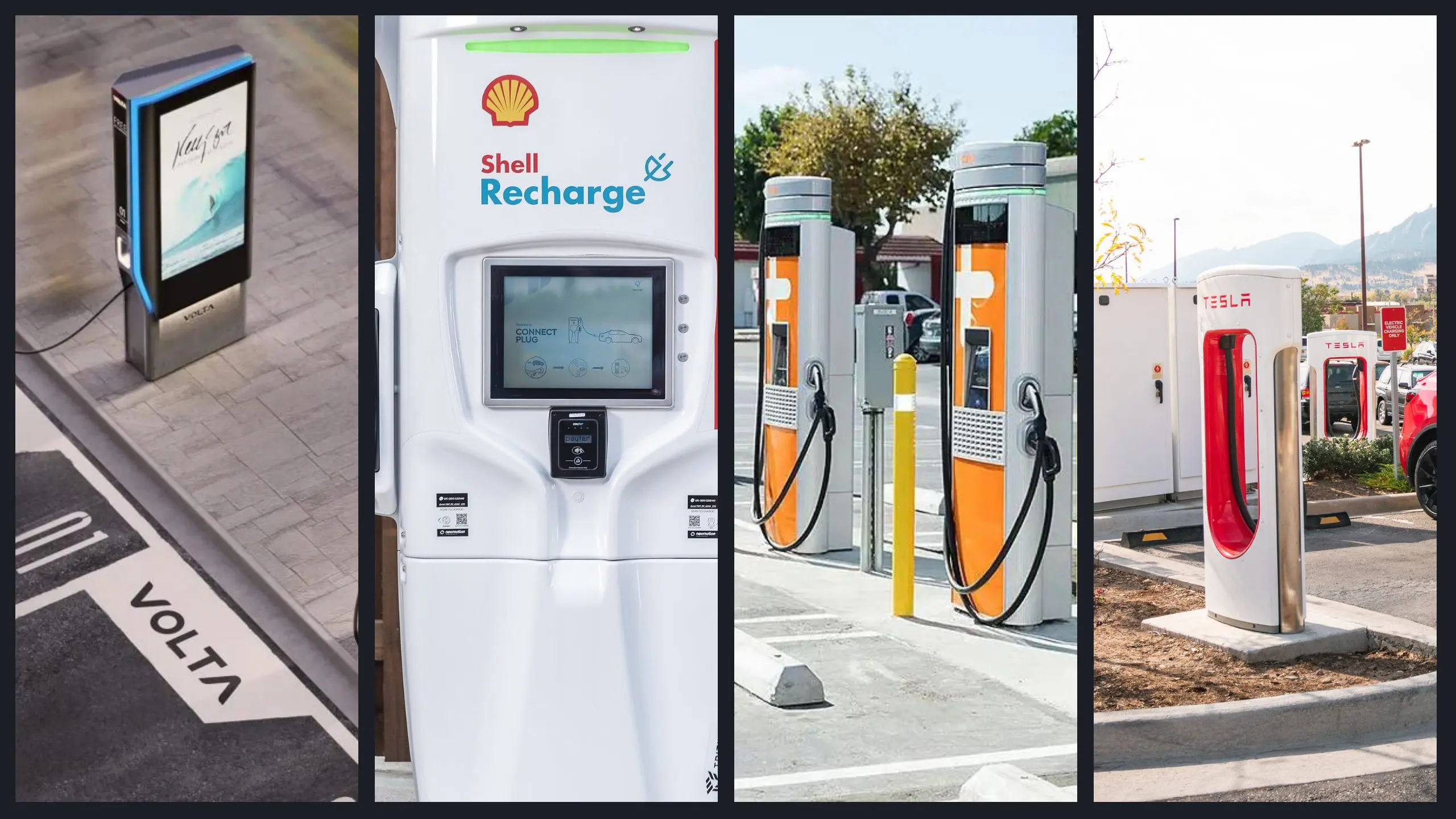
Every day, companies release another electric vehicle or announce plans to increase the electrification of their fleet. This leads to EVs becoming more prevalent in every part of the world. However, the biggest concern with EVs is the range limitation, which leads people to have doubts about finding charging stations on the roads. To overcome this obstacle, many companies have invested in establishing charging networks and stations all over the world.
Related Article: 15 Largest EV Charger Manufacturers in the World
To understand the concerns and the solutions in the US, we have gathered the list of ‘Top 15 Charging Networks in the US.’ According to the U.S. Department of Energy, there are 60,469 EV charging stations and 160,343 charging ports (37,549 DC sockets and 122,794 Level 1/2 ports) in the country in January 2024. Last year on January 2023, the numbers were as follows: 53,899 EV charging stations and 143,577 charging ports (28,623 DC sockets and 114,954 Level 1/2 ports). The new data shows that the number of EV charging stations in one year has increased by %12,2 and of charging ports by %11,7. The largest charging networks are ChargePoint, Tesla, and Blink. Volta & Shell Recharge, EV Connect, eVgo, and Electrify America are other big companies that provide charging services. You can find the number of stations of companies and the number of AC and DC charging ports in the table below.
| EV Charging Network | Number of Stations | DC Ports | Level 1 & 2 Ports |
|---|---|---|---|
| ChargePoint | 33,351 | 2,380 | 58,097 |
| Tesla Supercharger & Destination | 6,312 | 23,402 | 12,973 |
| Blink & SemaConnect | 5,437 | 175 | 16,688 |
| Shell Recharge & Volta | 2,380 | 635 | 5,665 |
| EV Connect | 1,089 | 824 | 2,916 |
| eVgo Network | 929 | 2,842 | 345 |
| Electrify America | 927 | 3,969 | 231 |
| Rivian Waypoints & Adventure Network | 757 | 385 | 375 |
| FLO | 716 | 43 | 1,379 |
| AMPUP | 509 | 5 | 2,330 |
| LIVINGSTON | 283 | 3 | 1460 |
| CHARGEUP | 191 | 19 | 597 |
| OpConnect | 175 | 6 | 704 |
| EVCS | 148 | 362 | 396 |
| FCN | 145 | 797 | 144 |
| Non-Networked | 6,196 | 1,054 | 14,463 |
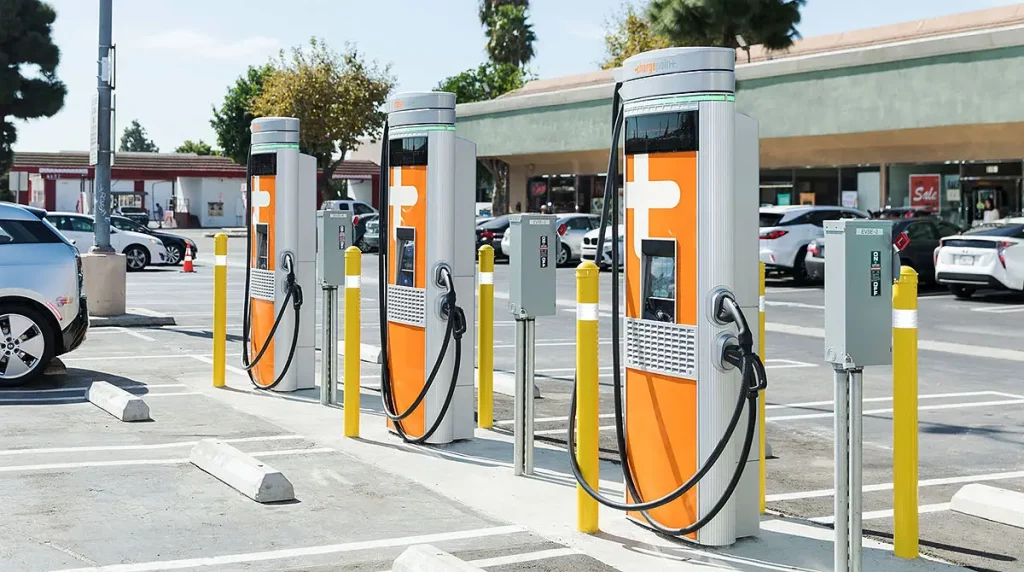
ChargePoint has the largest charging network in the US, yet relatively few of these are DC fast charging stations. Its stations mostly provide around 6.6kW of electricity per hour. This is the type of Level 2 charging that can be achieved through a 240V outlet or charging station at home. A vehicle can go around 25 miles when plugged into these chargers for an hour.
The business model of ChargePoint is different from the other charging networks. The company has stations at apartment complexes, hotels, stores, and other businesses. They can be seen even at public libraries or parks. The common characteristic of these locations is that people have several hours for their cars can recoup much of their charge.
In December 2023, ChargePoint announced its new fast-charging system called the Express Plus Power Link. It is capable of delivering charging speeds up to 500kW. According to ChargePoint, Express Plus is a modular DC fast-charging platform and its architecture is based upon power blocks, which, in turn, house up to five power modules to reach a desired charging specification. ChargePoint said these stations can simultaneously charge two vehicles at one time, at sustained high speeds of up to 500kW. Power blocks allocate power based on what specific vehicles can accommodate as they charge.

Tesla’s Supercharger network is the second largest in the country and its stations are close to each other compared to Electrify America. However, there is a downside: Tesla’s network is currently only available to Tesla vehicles. Yet, since Tesla sells the most EVs, a substantial proportion of electric cars on the road can benefit from these Supercharger stations.
The Supercharger network has the smoothest charging experience for its customers. Since the company already knows its customers’ payment information, people with Tesla vehicles plug the charger into their car and the charging begins automatically. In this sense, the charging is smoother than using a gas pump.
Tesla Superchargers have a lower max speed compared to some other charging networks. But this is just a theoretical limit for now. The fastest Superchargers can technically reach 300kW, but they are capped at 250kW for the time being. This is not a big downside because its speed is already more than enough for many cars.
In the meantime, Tesla is conducting some trials about opening its Supercharger network to non-Tesla vehicles. If this happens, that would be a big step toward a world where any EV capable of fast charging can charge at any DC fast charging station.
Tesla has another new type of charging station: The Destination Charger, which is being rolled out in select areas of the United States. The charging stations allow Tesla owners to charge their cars at destinations, rather than having to charge at a Supercharger. Those chargers are not owned or maintained by Tesla. Instead, they’re owned and maintained by the owners of the premises on which they’re located. Additionally, they’re located in areas such as hotel car parks.
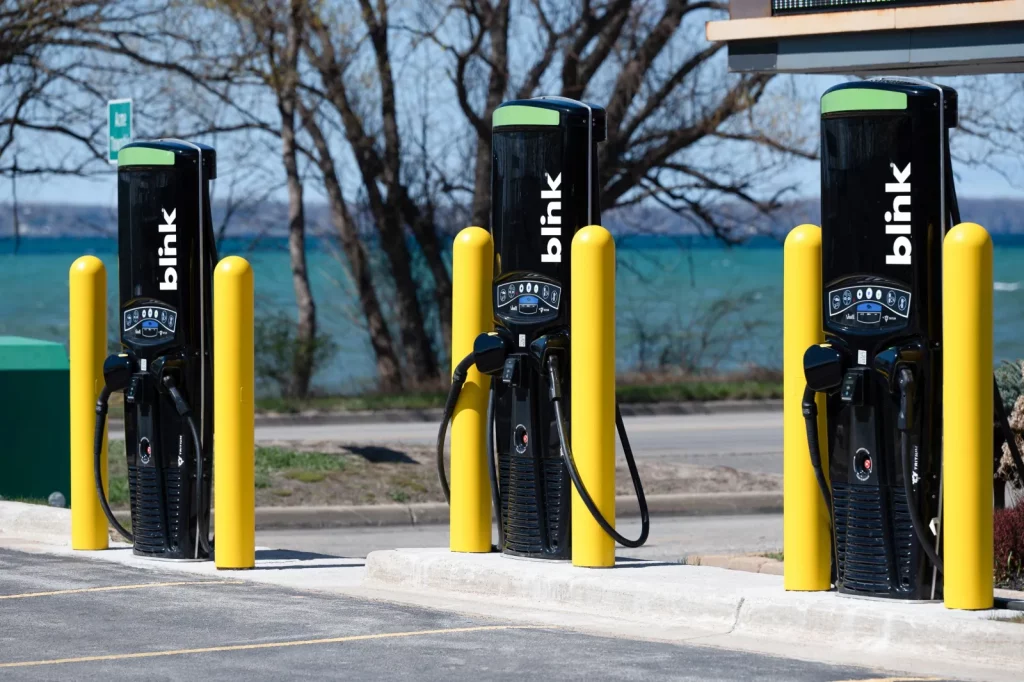
Blink is another large charging network mostly supplying Level 2 chargers. Its stations can be found at hotels, businesses, and the like. Acquiring SemaConnect in June 2022 substantially increased Blink’s footprint across the country.
Like ChargePoint, a few DC fast chargers are available on the Blink network. But the options in its stations are very few. There aren’t that many Blink fast chargers, and those that do exist provide around 50kW of power. Also, it’s less likely to come across Blink chargers on the roads but if its app is installed on your phone, you can find one near you.
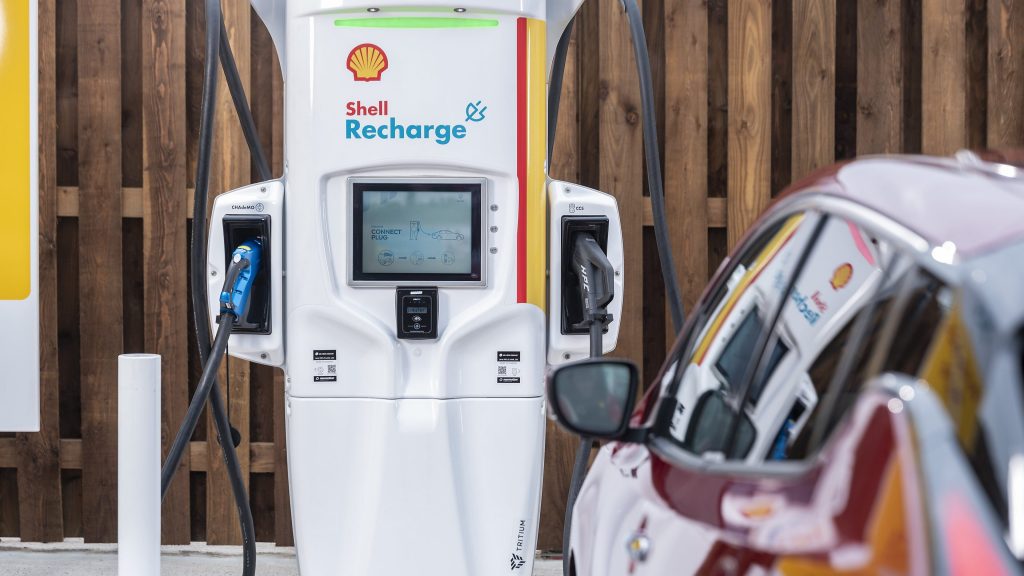
Better known for selling gasoline, the oil giant Royal Dutch Shell has been very active in getting into the EV charging game recently. In 2019, Shell purchased the EV charging network, Greenlots. Then, in 2019, it acquired the European EV charging network, Ubitricity. Also, Shell partnered with General Motors to increase EV charging infrastructure in the US. Lastly, with the Shell-branded ReCharge, the company has entered the very competitive home EV charging market.
Shell has finalized the acquisition Volta Inc. on April 2023 for $169 million. Before the acquisition, Volta was the 4th largest charging network in the US. The difference of this company has always been that ad sales are centered on its business model. These ads covered most of the costs of the charging stations. Volta also had plans to offer more paid DC fast-charge outlets. Volta said in late 2022 that it had more than 5700 of these “out-of-home screens” in its network of over 3000 charging stalls in the U.S. Volta operates in 31 U.S. states and territories and regularly supplies around 112,000 charging sessions to EV drivers each month.
As of April 2023, in the U.S., Shell Recharge is primarily geographically limited to California. After the acquisition of Volta, Shell said it “now owns and operates one of the largest public electric vehicle (EV) charging networks in the U.S.”. According to the data of DOE, Shell and Volta charging network is the 4th largest charging network in the U.S.
Related Article: Shell to buy out Volta Charging Inc. for $169 Million
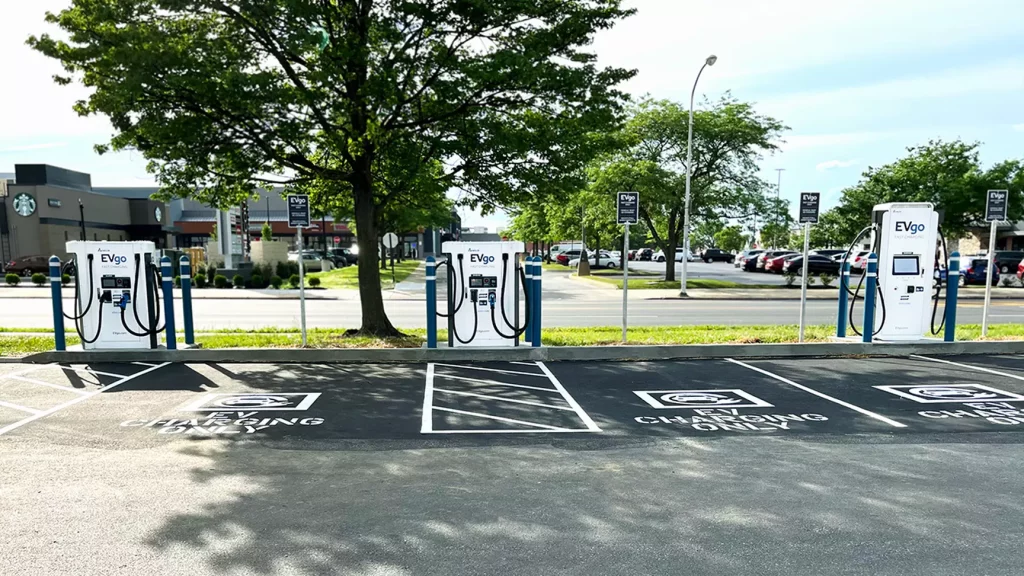
Many people can’t charge their vehicles at home. So, those people need access to charging networks in town. EVgo is best catering to this need since the company is one of the largest DC fast-charging networks in the US.
The speed of EVgo stations is around 50kW. This means that one vehicle can be charged up to 80% in one hour. That’s a long time for a road trip, but it’s a reasonable charging time while shopping or dining at a restaurant.
EVgo has also an app that offers the option of swiping a credit card. EVgo is the friendliest network for cars that use a CHAdeMO port. Each EVgo station has one CCS and one CHAdeMO plug.
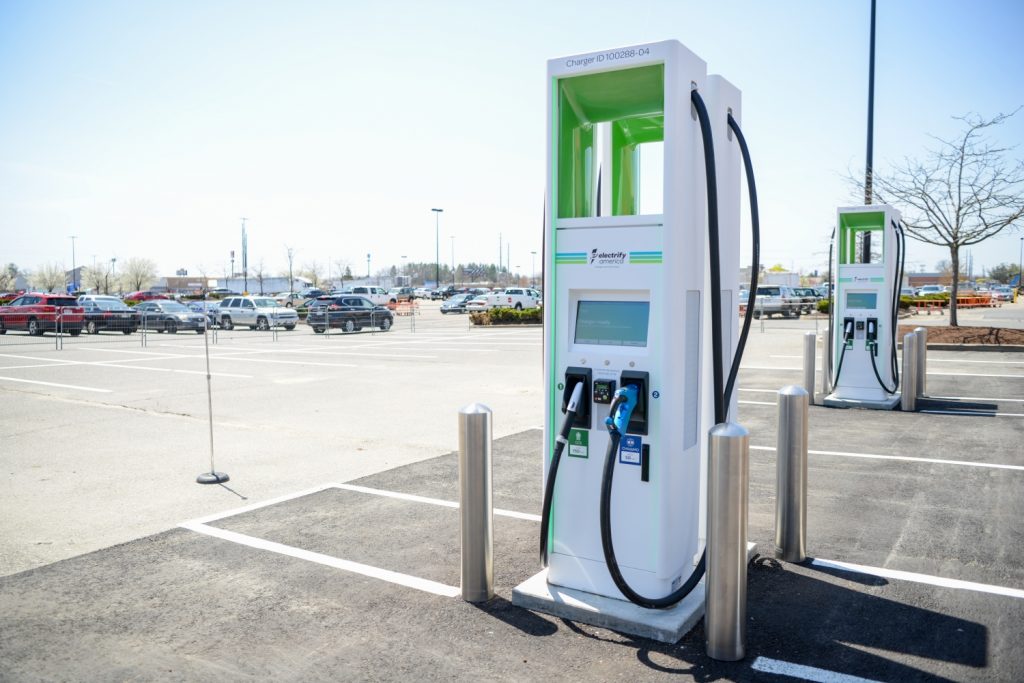
Electrify America is currently one of the largest DC fast-charger networks in the United States. The company has around 800 charging stations with about 3,500 individual EV chargers. The company is planning to expand in the United States and Canada by 2026, growing to approximately 10,000 chargers across 1,800 different Electrify America stations.
Unlike many other competitors, EA has kept a keen focus on delivering as much power as possible, offering a minimum of 150 kW, but power as high as 350 kW. Such energy demands can strain the local electrical grid in certain areas, especially when peak demand is at its highest.
Its charging units are open to all EVs with a CCS charging connection (the industry standard). The few vehicles with CHAdeMO port like the Nissan Leaf can also use the stations of Electrify America but there is only one port in each station. Also, Tesla vehicles can connect to Electrify America with a CSS connector.
The stations of Electrify America are mostly located near Interstate exits and often in the parking lots of partnering stores such as Walmart or Sheetz. It has an app to start and pay for charging or swipe a credit card instead.